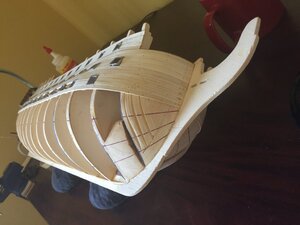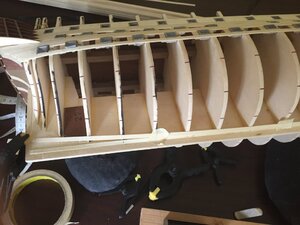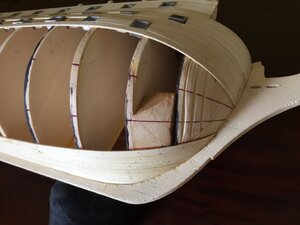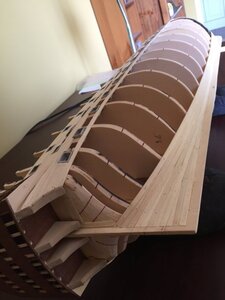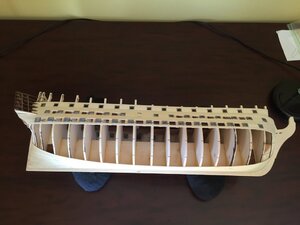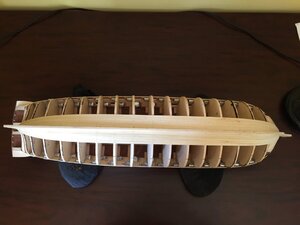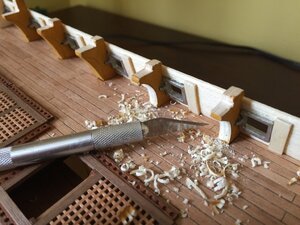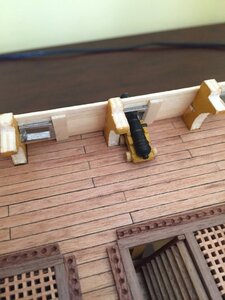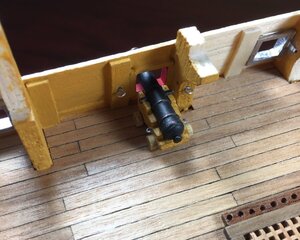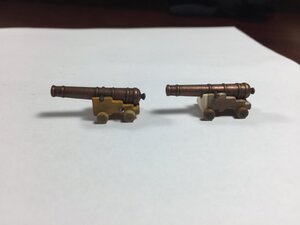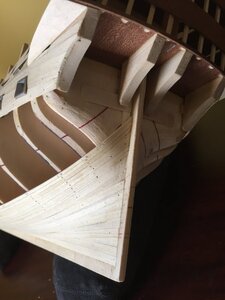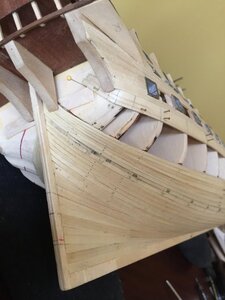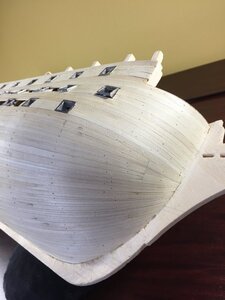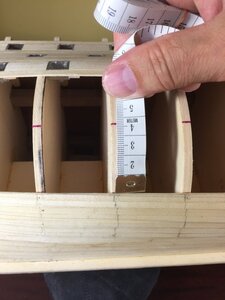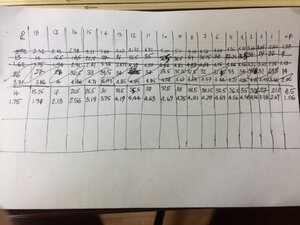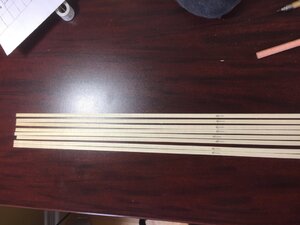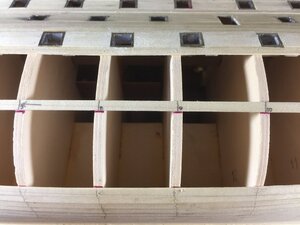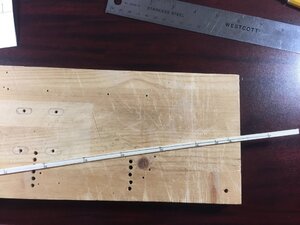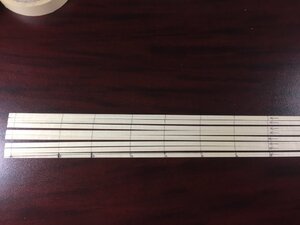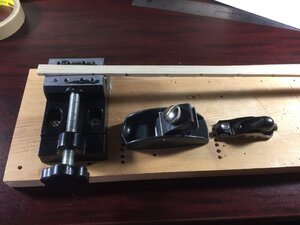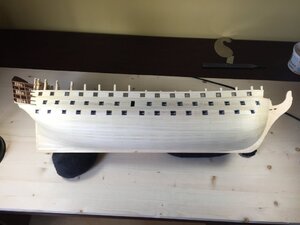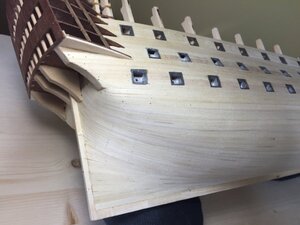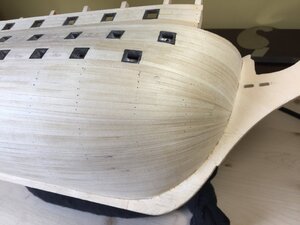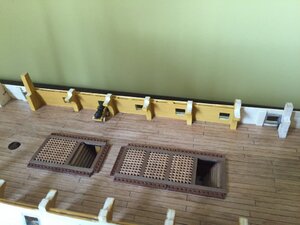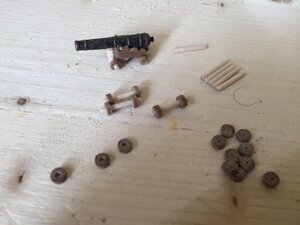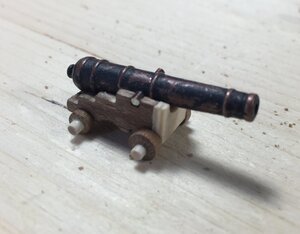In order to better understand curvatures of the hull I install "spiling battens". Spiling battens I use are thin wood strips which are straight and do not want to easily bend sideways. I use 0.5 x 5 mm wood strips. I lay them in such a way that they are not forced laterally whatsoever. I do so as I do not have intention to do lateral bending on any of the planks. I also do not plan making any of laterally curved planks with cutting plank pieces out of sheet wood material (too expensive, too much work and it is hardly a way historical shipwrights built their hulls - here I can be very wrong, but I do not know differently). I use a simplest planking technique.
The battens are simply attached to bulkheads with masking tape as you can see on pictures below. Masking tape was used instead of pins as it does not split my wood spiling battens.
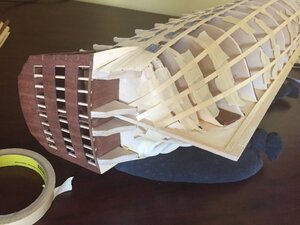
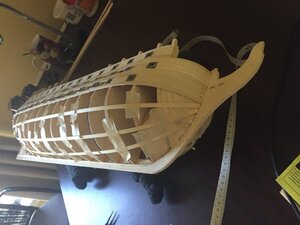
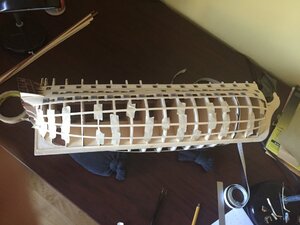
The battens are simply attached to bulkheads with masking tape as you can see on pictures below. Masking tape was used instead of pins as it does not split my wood spiling battens.



Last edited:



